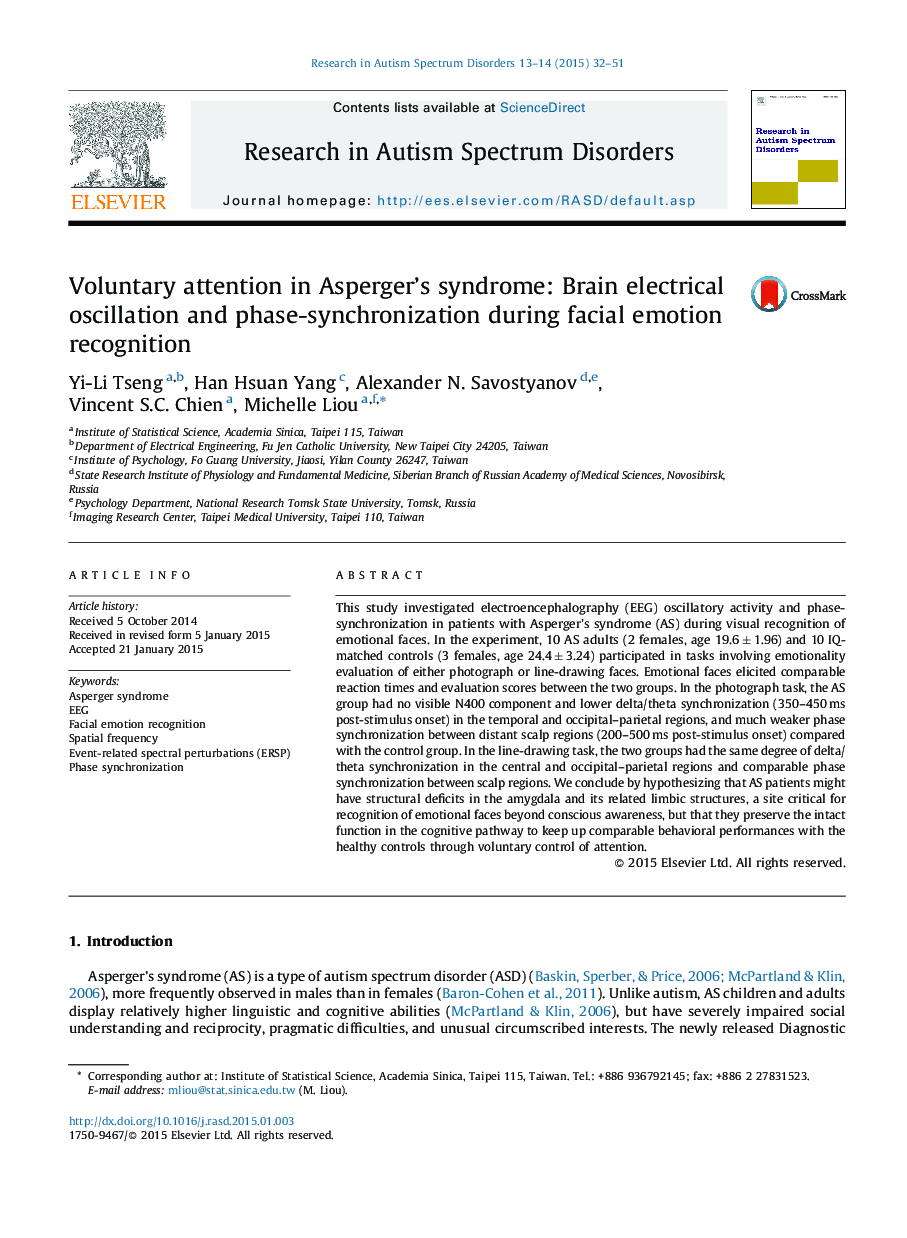| Article ID | Journal | Published Year | Pages | File Type |
|---|---|---|---|---|
| 370144 | Research in Autism Spectrum Disorders | 2015 | 20 Pages |
•We compared Asperger's (AS) subjects and controls on emotional face recognition.•We examined behavioral, ERP, ERSP and phase synchronization data.•AS subjects have deficits in non-conscious processing of coarse information.•AS subjects count on voluntary attention in emotional face recognition.•The amygdala is the key to understanding social-related problems in AS subjects.
This study investigated electroencephalography (EEG) oscillatory activity and phase-synchronization in patients with Asperger's syndrome (AS) during visual recognition of emotional faces. In the experiment, 10 AS adults (2 females, age 19.6 ± 1.96) and 10 IQ-matched controls (3 females, age 24.4 ± 3.24) participated in tasks involving emotionality evaluation of either photograph or line-drawing faces. Emotional faces elicited comparable reaction times and evaluation scores between the two groups. In the photograph task, the AS group had no visible N400 component and lower delta/theta synchronization (350–450 ms post-stimulus onset) in the temporal and occipital–parietal regions, and much weaker phase synchronization between distant scalp regions (200–500 ms post-stimulus onset) compared with the control group. In the line-drawing task, the two groups had the same degree of delta/theta synchronization in the central and occipital–parietal regions and comparable phase synchronization between scalp regions. We conclude by hypothesizing that AS patients might have structural deficits in the amygdala and its related limbic structures, a site critical for recognition of emotional faces beyond conscious awareness, but that they preserve the intact function in the cognitive pathway to keep up comparable behavioral performances with the healthy controls through voluntary control of attention.
